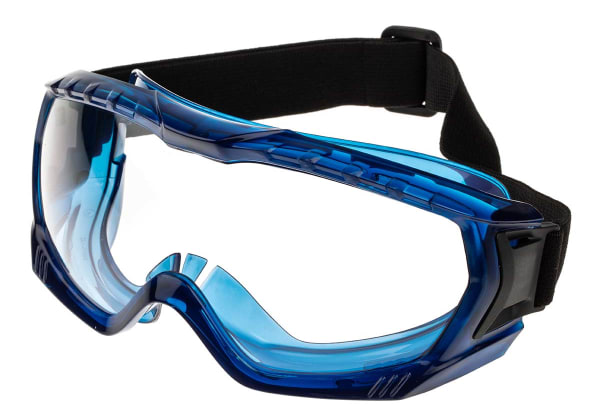- Published 11 Jan 2023
- Last Modified 14 Mar 2024
- 13 min
Complete Guide to Respiratory Protective Equipment
Discover the different types of respirators and filters available in our comprehensive guide.

What is Respiratory Protective Equipment?
Respiratory protective equipment (RPE) encompasses a range of personal protective equipment (PPE) designed to protect the wearer’s mouth, nose, and respiratory system. This can include respirators, face masks, helmets, hoods, and visors.
RPE equipment is primarily used to avoid or filter out potentially harmful substances and particles in the air. This can include dust, vapours, mists, gases, and metal fumes. However, since there are various types of RPE mask, some are specially equipped to protect against particular types of airborne contaminants.
Hierarchy of Hazard Control
While it is impossible to eliminate every risk in every situation, there is an industry-standard hierarchy of control regarding breathing hazards. Here is the hierarchy ranked from most to least effective:
- Elimination (remove the hazard)
- Substitution (replace the hazard with a less-harmful alternative)
- Engineering controls (remove people from the hazard by improving ventilation, implementing automated processes etc)
- Administrative controls (remove people from the hazard by providing full training, implementing safety signage, changing working patterns etc)
- PPE (provide protection through PPE)
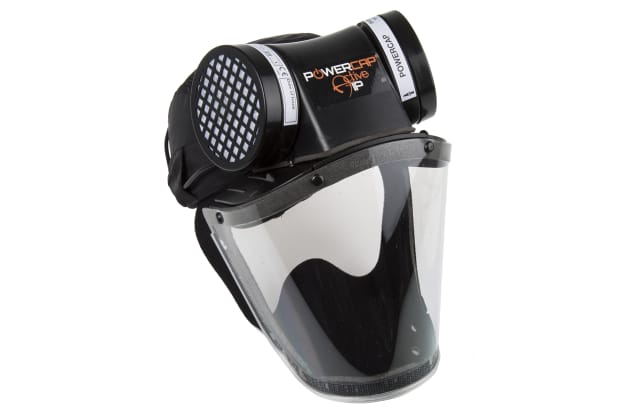
It may come as a surprise that PPE is the least effective method of hazard control, but the key to building an effective solution for managing risk involves working through the hierarchy, top-down, to establish the possibilities. For instance, if it is possible to eliminate the hazard, the steps below won’t be necessary. However, if this is not possible, and the risk of exposure is still present by the time you reach the last step, PPE will be necessary to provide protection.
The hierarchy of control measures is important because many people skip the first four steps and go directly to PPE. While the importance of PPE should not be overlooked, it is also essential to remember that the hazard should always be addressed first if this is an achievable possibility.
Respiratory Protective Equipment Regulations
There are several different standards for respiratory protection equipment. You can read more about these in the sections below.
European Standards
All RPE types must be fully tested and certified according to European legislation. The European standards (EN) signify that equipment has been tested and meets specific performance requirements. Different standards apply to various types of RPE.
EN136
This standard applies to full face masks. This means any mask which covers the wearer’s eyes, nose, mouth, and chin. It must also either include a respiratory filter or be used as part of a respiratory device. Equipment within this category can be split down further into three categories:
- Light-duty and low-maintenance
- Standard-duty with maintainable components
- Heavy-duty
Class | Durability | Maintenance | Characteristics | Suitable Uses |
|---|---|---|---|---|
| 1 | Light-duty | Low maintenance | - Designed for infrequent use- Often disposable | Low danger environments |
| 2 | Standard-duty | Maintainable components | - Designed so parts can be cleaned, maintained, or replaced- Manufactured for a longer lifespan than Class 1 masks | Frequent or daily use |
| 3 | Heavy-duty | Highest maintenance ability | - Highest level of respiratory protection- Highly durable | Firefighters |
EN140
This standard applies to half and quarter masks. Half masks cover the nose, mouth, and chin, whereas quarter masks just cover the mouth and nose. These masks may have a range of materials and filter types, depending on the specific product. If the mask is used as a negative pressure system, the filters must also comply with the relevant standard/s.
EN149
This standard applies to filtering half masks. This means that the mask is either fully or partially made with filter material, or that the filter is not detachable from the remainder of the mask. There are three subcategories within EN149, detailing the different levels of protection. These are:
Class | Filter Penetration | Internal Leak Rate | Protects Against | Typical Uses |
|---|---|---|---|---|
| FFP1 | Minimum 80% of airborne particles | Maximum 22% | Dust | DIY |
| FFP2 | Minimum 94% of airborne particles | Maximum 8% | Powdered chemicals; some bacteria and viruses | Construction, agriculture, and industry |
| FFP3 | Minimum 99% of airborne particles | Maximum 2% | Very fine particles including asbestos | Medical, high-risk industry |
Workplace Exposure Limits
You should also be aware of the EH40 workplace exposure limits (WELs). This applies to approximately 500 defined substances, where set limits have been imposed on the allowable levels of certain hazards in the air.
It is the employer’s responsibility to keep the air contaminate levels as low as reasonably possible below the workplace exposure limit. However, if levels are near or above the WEL, suitable PPE can be used to protect personnel. The protection level of a given respirator is typically stated as a multiple of the workplace exposure limit.
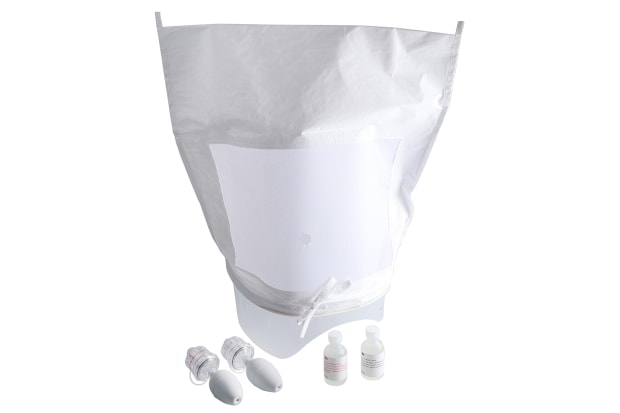
Face Fit Testing Kits
Also required under the regulation is confirmation that RPE masks are suitable and fit for purpose. Testing should be carried out to ensure masks are correctly fitted – face fit testing is designed for this.
Face fit testing kits are simply designed to check whether an individual’s mask fits their face size and shape. This ensures compliance and confirms if a particular mask provides suitable protection for the wearer.
Wearing a Respirator
It is essential to ensure that respirators and masks fit correctly and are suitable for use with the hazardous material/s they need to protect against.
How to Wear a Respirator
The following steps detail how to fit and wear a respirator:
- Remove any outer packaging and position the respirator with the nose piece at the top
- Hold the facepiece under your chin with the nose piece over your nose
- Secure the strap/s behind your ears, making sure the respirator does not slip. Take care not to cross or tangle the straps
- If the respirator has a nose clip, press down either side of your nose to meld the nose piece to the shape of your nose
- If air is leaking at the edges of the mask, readjust the straps to achieve a proper seal. If you cannot achieve a proper seal, it may be that a different size is required
If the respirator does not fit properly or you are still experiencing air leakage, do not wear the mask as it will not provide protection. Instead, try a different size mask and ensure it fits properly before exposing yourself to any hazards.
What are the Limitations of Respiratory Protective Equipment?
As with any other form of PPE, respiratory protection equipment does have several limitations. These include:
- Half masks are not suitable for people with full beards as it is not possible to form an effective seal around the face. A powered air system should be used instead
- Full and half mask filters have a finite lifespan. Dust filters can become clogged, whereas a gas mask filter should be changed either after a month of use or immediately if there is a breakthrough (when gas can be detected inside the mask). Special one-use filters should be used and changed after every use when working with gases that have little or no discernible odour
- Disposable masks are suitable for protection against particles like dust only. They will not protect against gases
Respiratory Protective Equipment at Work
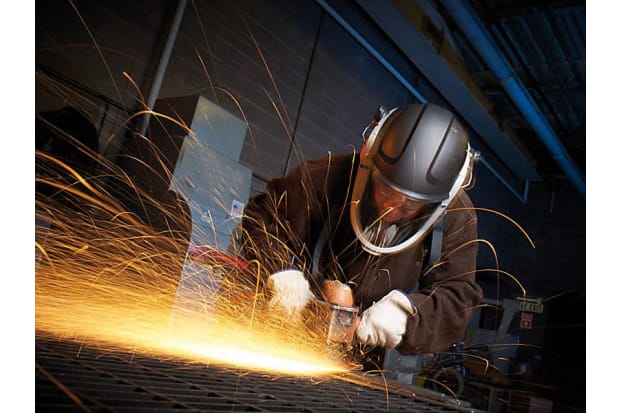
Different workplaces and environments require various types of respiratory protection. Industrial locations where respirators may be needed include:
- Agriculture
- Foundries
- Chemical manufacturing facilities
- Construction sites
- Mining operations
- Workshops and automotive repair
- Healthcare facilities
- Pharmaceuticals
- Firefighting
- Waste management and recycling facilities
Additionally, common activities where RPE may be needed include:
- Painting, decorating, spraying, and coating
- Cleaning and maintenance
- Working with resins e.g. resin 3D printers
- Sandblasting
- Working with adhesives
- Welding
- Working with hazardous materials e.g. asbestos
- Woodworking, sanding, and carpentry
It is imperative to ensure that you are fully aware of the potential hazards in the workplace. This will determine the type of RPE needed to guarantee protection whilst working.
What Type of Mask Do I Need for Asbestos?
Asbestos was a commonly used building material in the past, and many older buildings still contain asbestos today. It is highly dangerous and exposure to asbestos fibres can lead to several serious diseases. As a result, proper protection is vital when working with materials which contain asbestos. Additionally, if you suspect that a building may contain asbestos, you should always take the proper precautions just in case. You should wear either a full or half-face cartridge mask when dealing with asbestos, preferably fitted with a P3 filter. This is a high asbestos mask rating recommended for maximum protection.
What is the Best Mask for Paint and Chemical Fumes?
When working with chemicals such as paints and glues, you must obtain the material safety data sheet (MSDS) from the manufacturer or point of purchase. This is a requirement under the COSHH regulations and it will inform which types of filter devices are recommended when the chemical is being used.
What Type of Mask Do I Need for Dealing with Mould?
Mould exposure can cause various health issues, including allergic reactions and respiratory problems. The type of respiratory protective equipment recommended typically depends on the extent of mould exposure. For minor mould cleanup tasks and when exposed to a small amount of mould, an FFP2 mask can provide sufficient protection. However, for more significant mould and areas where mould growth is extensive, either a full or half-face respirator with a P3 filter is recommended.
What Type of Mask Do I Need for Smoke?
For smoke, particularly from fires which contain a complex mix of particles, gases, and vapours, a P3 filter is advisable due to the presence of very fine particles. Powered respirators with appropriate filters can also offer higher levels of protection and comfort, especially for prolonged use. However, in environments with very high levels of pollutants or low oxygen levels, self-contained breathing apparatus provides the highest level of respiratory protection. They supply the wearer with clean air from a compressed air cylinder, making them suitable for firefighting and emergency response situations involving smoke.
What Type of Mask Do I Need for Carbon Monoxide?
Carbon monoxide can be extremely hazardous. Therefore, a full-face mask with a carbon monoxide filter or self-contained breathing apparatus is typically recommended for protection in environments where CO levels are elevated or there is a risk of exposure.
Types of Respiratory Protective Equipment
As there are many different types of respiratory protective equipment, it is essential to understand which uses and applications are suitable for the various respirator mask types. The key types you should be aware of are detailed below.
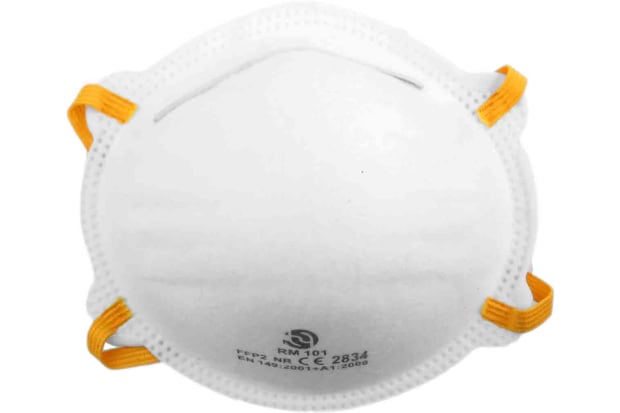
Unpowered Respirators
With an unpowered respirator, the user draws the air in through the mask’s material (FFP) or filter cartridge. The filtering face piece (FFP) works by removing solid particles as the air is drawn through the material of the mask by the user. Many FFPs have an exhaust valve to prevent condensation inside the mask.
However, FFP masks are not always suitable, depending on the required application, as they can be difficult to seal effectively around the face and the seal may break with flexing or movement. It is important to note that this manual action of drawing the air in can become tiring after a while, which is why powered respirators are often recommended for prolonged periods of use.
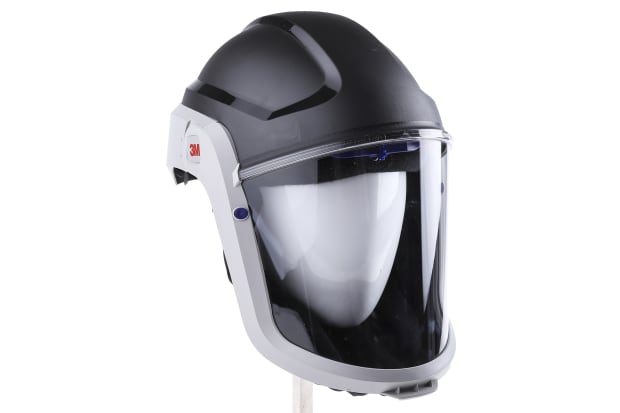
Powered Respirators
A powered respirator features a battery and a blower unit. It sucks air in through a filter and blows it into a headtop, creating a positive pressure atmosphere. This prevents chemicals and dust from accessing the headtop, protecting the worker.
Powered respirators are much more expensive than unpowered respirators, but they are also much more comfortable to wear over prolonged periods. Powered respirator batteries typically last approximately 8 hours, making them ideal for wearing during shift work. Many models also include a variety of respirator filters that can be fitted to protect against dust, gases, or a combination of other hazards.
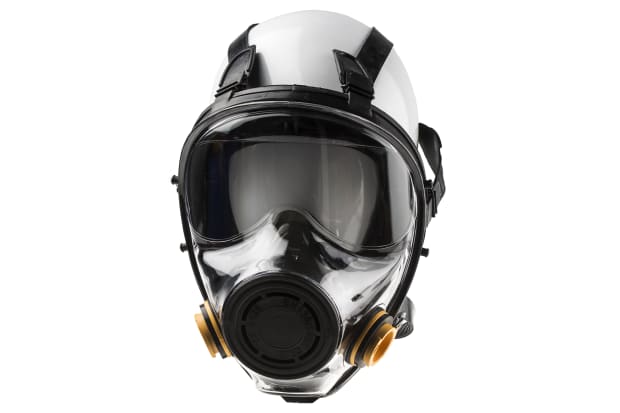
Air Supplied Breathing Apparatus
A supplied-air respirator or air-fed helmet is similar to a powered respirator. However, instead of a blower and battery, the equipment is hooked up to a compressed air system.
This can be limiting as it restricts movement, but there is no chance of the battery going flat or the blower breaking, which may happen with powered respirators over prolonged periods. Supplied air respirator hoses typically include special filter units to clean the air, remove any oil or contaminants, and ensure the air is breathable.
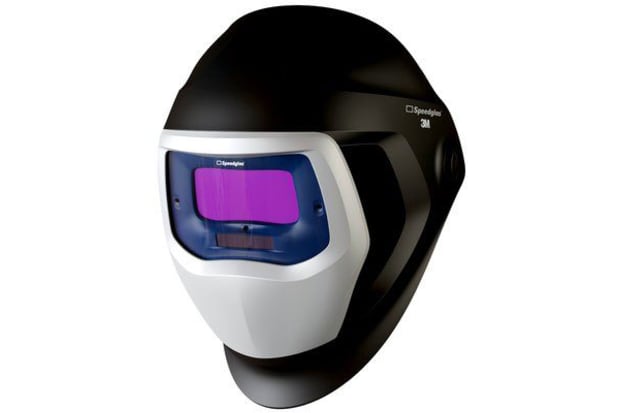
Helmets and Visors
A respiratory helmet, air hood respirator, or visor respirator can be beneficial in some scenarios. Primarily used when welding, helmet respirators are designed to protect against fine oxide dust particles generated through the welding process.
These particles can cause metal fume fever, so it is important to be fully protected. Powered headtops with welding glass screens are also suitable specialist respiratory protective equipment for welding.
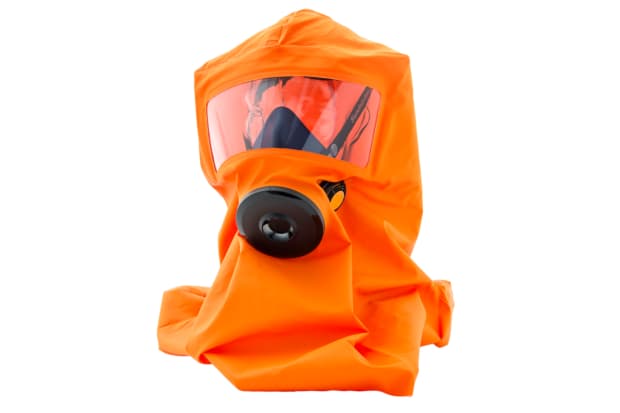
Protective Hoods
Protective hoods cover the head, neck, and sometimes shoulders, protecting the wearer from hazardous substances in the air. These hoods can be made from various materials, including silicone, PVC, and polyester, to ensure they provide adequate protection against the specific hazards present in the wearer's environment.
Safety hoods are reusable and durable and can typically be decontaminated after use. They often include clear visors or face shields for added visibility.
Respirator Filters and Mask Ratings
Respirator filters are designed to remove contaminants and purify the air entering the mask. Different respirator filter codes and grades are available depending on the type of RPE, the hazard/s, and the severity of the threat. Common RPE filter types include:
Particle Filters
Particulate filters can be categorised in three ways:
Category | Level of Protection | APF | OEL | Suitable Uses |
|---|---|---|---|---|
| P1 | Low | Materials in concentrations 4x limit | Materials in concentrations 4x limit | Hand sanding, drilling, cutting, aerosols (solid and liquid) |
| P2 | Medium | Materials in concentrations 10x limit | Materials in concentrations 12x limit | Sanding, plastering, dust |
| P3 | High | Materials in concentrations 20x limit | Materials in concentrations 50x limit | Pharmaceuticals, asbestos, bacteria, viruses |
What are Occupational Exposure Limits?
Occupational Exposure Limits (OEL) are predetermined higher limits on the adequate concentration of hazardous substances in the air of a workplace. They are typically determined by workplace sampling and analysing historical exposure and workplace health statistics. OELs are enforceable by legislation but can vary between different countries.
Gas and Vapour Filters
Gas and vapour respiratory filters are designed to protect the wearer against hazardous gases and vapour. They can also be separated into distinct classes to determine the efficiency of the filter and the level of protection it offers. These are typically low, medium, and high efficiency.
Combined Filters
Combined filters are designed to protect against particles, gases and vapours simultaneously. However, it is necessary to have an understanding of the air concentration to ensure that a sufficient protection level can be achieved. This can be done in a variety of ways, including using sampling tubes.
RPE Maintenance, Care, and Cleaning
Cleaning and maintaining respirators is crucial to ensuring that they provide protection in hazardous environments.
Below are some general RPE care guidelines. However, it's vital to follow the manufacturer's instructions for specific products, as procedures may vary depending on the type and brand of respirator.
Care and Cleaning
- Before Each Use: Inspect the respirator for damage, dirt, or missing parts
- After Each Use: It's essential to clean and disinfect respirators after each use to remove contaminants or particulates that may have settled on the surface
- Remove filters, cartridges, hoses, and any other components recommended by the manufacturer
- Wash the facepiece and components in warm, soapy water. You can use a mild disinfectant or a solution recommended by the manufacturer. Avoid harsh cleaning agents that could damage the respirator
- Thoroughly rinse components in clean water to remove any soap residue or cleaning solution
- Air-dry the components in a clean area away from direct sunlight. Make sure all parts are completely dry before reassembly
Storage
Store RPE in a clean, dry place away from chemicals, contaminants, and extreme temperatures. Respirators should be stored in a way that prevents deformation of the facepiece and exhalation valve. A resealable bag or dedicated storage container can be useful for this purpose.
Maintenance
Ensure your equipment remains in optimal condition by following an RPE maintenance checklist, covering the following areas:
- Regularly check for signs of wear and tear, especially on seals, straps, and valves. Replace any damaged or worn parts immediately
- Follow the manufacturer's guidelines on when to replace filters or cartridges. This can vary depending on the specific hazards present and the duration of use
- Maintain records of inspections, cleanings, and maintenance for regulatory compliance and to track equipment lifespan


